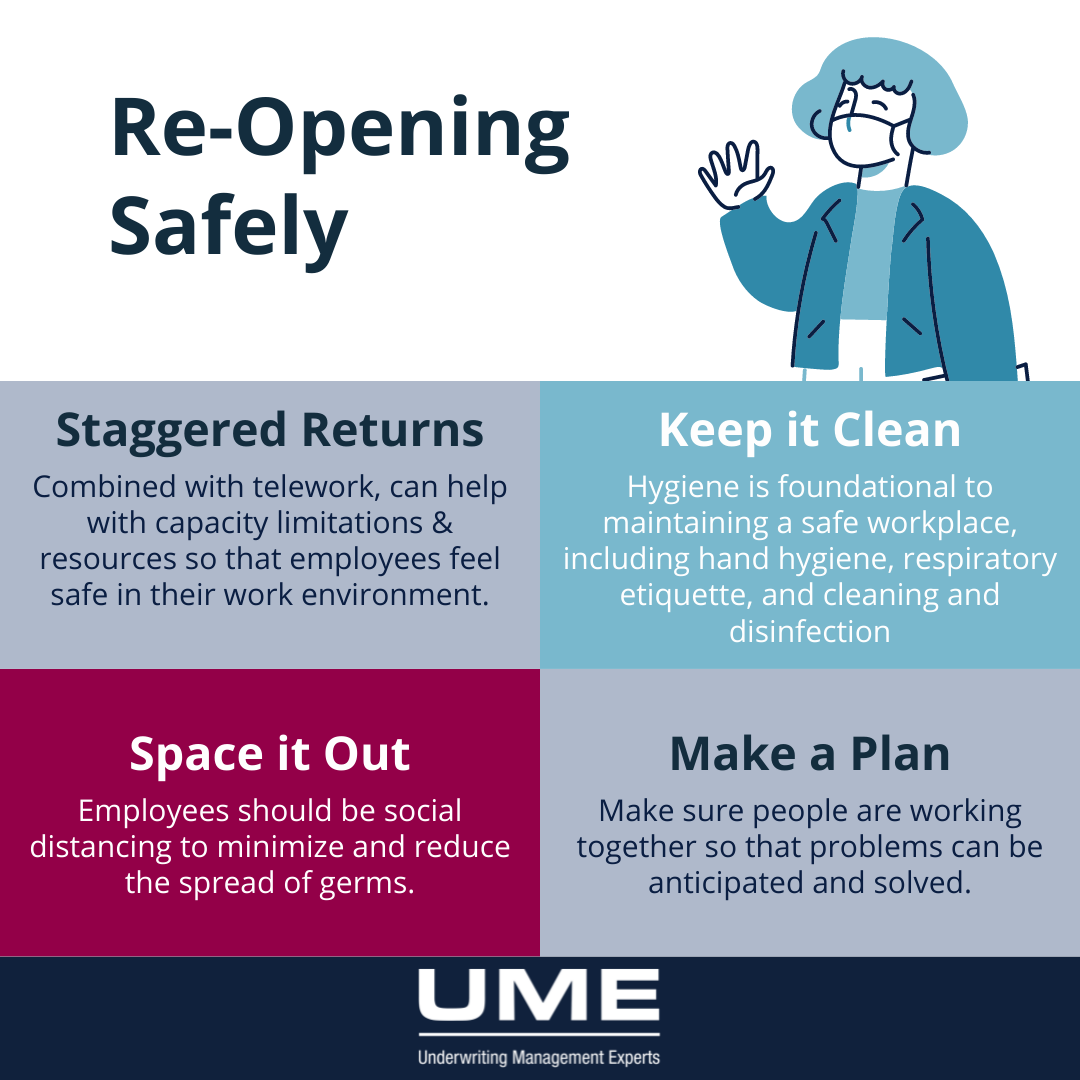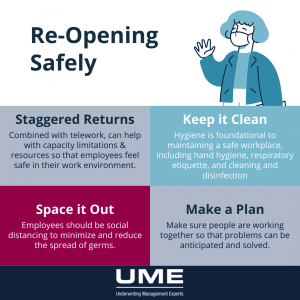As workplaces are beginning to re-open, there are many concerns with how to keep things running smoothly and most importantly, safely. According to OSHA, basic hygiene, (e.g., hand hygiene, cleaning, and disinfection), social distancing, identification and isolation of sick employees, workplace controls and flexibilities, and employee training should act as guiding principles when developing and implementing strategies[i]. There is an overwhelming number of resources to help guide reopening decisions, so here is a breakdown of the basics.
- Implementing Telework & Staggered Returns: When possible and feasible with business operations, consider telework. This will allow employers to stagger returns and allow at-risk employees to continue working at home. Telework can help implement limitations on the number of people in the workplace at a time, and make social distancing practices more feasible. Also, consider extending special accommodations to workers with household members at higher risk of severe illness [ii].
- Know Your People: It is crucial to the reopening process to develop and implement policies and procedures that address preventing, monitoring for, and responding to any emergence or resurgence of COVID-19 in the workplace or community. Include self-monitoring practices and have employees check for symptoms before entering the workplace. Allow employees to get tested if they have fever, cough, aches, or sore throat. Having a company culture that promotes the well-being of employees and encourages those who are sick to stay home will be essential.
- Keep It Clean: Hygiene is foundational to maintaining a safe workplace, including practices for hand hygiene, respiratory etiquette, cleaning, and disinfection[iii]. Determine what needs to be cleaned vs. disinfected. Frequently touched surfaces and objects should be disinfected using a product from the EPA List of approved disinfectants for Coronavirus (Click Here For the Full List). Routine cleaning and disinfecting are an important part of reducing the risk of exposure to COVID-19[iv]. If those products are not available, properly diluted bleach solutions could be an effective alternative.
- Space It Out (Give It Some Space): As a guiding principle, employees should be social distancing. This could include practices that maximize and maintain a distance between all people, including workers, customers, and visitors to reduce the spread of COVID-19 [v].
- Make a Plan and Stick To It: Make sure people are working together so that problems can be anticipated and solved. Remember to think in terms of risk, keep transparent communication with employees, and stay positive[vi]!
In summary, the CDC advises individuals to practice social distancing where needed, wear facial coverings if unvaccinated, and follow proper prevention hygiene, such as washing hands frequently and using alcohol-based (at least 60% alcohol) hand sanitizer when soap and water are not available[vii]. Check out this quick video from Forbes for more details on “How To Reopen Your Business Or Office Safely”, Click Here for more information.
[i] (Occupational Safety and Health Administration (OSHA), 2020)
[ii] (Occupational Safety and Health Administration (OSHA), 2020)
[iii] (Occupational Safety and Health Administration (OSHA), 2020)
[iv] (Centers for Disease Control & Prevention (CDC), 2021)
[v] (Centers for Disease Control & Prevention (CDC), 2021)
[vi] (Forbes, 2020)
[vii] (Centers for Disease Control & Prevention (CDC), 2021)

